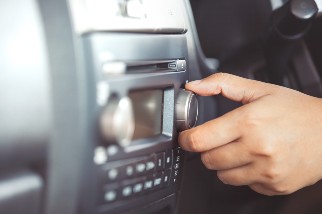Noise is all around us. Alarm clocks, car horns, lawn mowers, music. While these sounds are to some extent unavoidable, there comes a point when they can be hazardous to your hearing. Exposure to noise over 70 decibels (dB) for a prolonged period can cause hearing loss.
While these sounds are to some extent unavoidable, there comes a point when they can be hazardous to your hearing. Exposure to noise over 70 decibels (dB) for a prolonged period can cause hearing loss.
We may not think about how noise affects our hearing, but hearing loss is the third most common chronic health condition in the U.S. Although noisy work environments can be a contributing factor, that’s not always the root cause. CDC reports that more than half of U.S. adults with hearing damage from noise do not have noisy jobs.
While it may not be the workplace itself that is contributing to someone’s hearing loss, the effects of damaged hearing can impact a worker’s health and productivity. Exposure to hazardous noise has been linked to productivity losses, fatigue, cognitive impairment and cardiovascular disease, among other conditions.
NIOSH estimates that $242 million is spent on workers’ compensation for hearing loss disability each year. Furthermore, the Journal of the American Geriatrics Society projects that the cost of first-year hearing loss treatment will increase to $51 billion by 2030.
Those employers thinking they aren’t liable for hearing loss that takes place as of a result of non-work-related activities should note that workplace audiograms often cannot distinguish between occupational and nonoccupational noise damage and, therefore, employers must assume liability.
It’s the safety professional’s role to establish effective hearing conservation programs to reduce noise-induced hearing loss. This includes monitoring noise levels, performing annual audiometric testing, providing hearing protection and conducting training.
While these programs can help address hazardous noise on the job, they don’t evaluate other activities that involve excessive noise exposure. In a peer-reviewed article titled “Noise: Not Just in the Workplace,” Ryan Cannady examines different activities people encounter outside of work and the impact they can have on hearing.
Using Personal Audio Devices
On and off the job site, earbuds and headphones are everywhere as people use them for phone calls and to listen to music. A 2015 World Health Organization (WHO) study found that 50% of teenagers and young adults are exposed to unsafe levels of sound from personal audio devices. The study also notes that safe listening depends on duration, frequency and loudness of the device, and that listening for prolonged periods can cause damage and lead to irreversible hearing loss.
A 2018 study involved 40 adults listening to songs at 100%, 75%, 50% or 0% volume to examine the potential hearing damage from personal audio devices. The results showed that listening to the music for 30 minutes through standard earbuds produced an average noise level of 97 dB at 100% volume, 83.3 dB at 75% volume, and 65.6 dB at 50% volume. Furthermore, the study found that listening to a personal audio device at 100% volume will lead to temporary threshold shifts and produce risk of permanent hearing damage.
Given these data, those who use personal audio devices should limit exposure time and frequency of earbud or headphone use or reduce the volume to help protect their hearing.
Participating in Exercise Classes
Working to improve your physical fitness can have tremendous benefits for your health. It is important to remember, however, that exercise classes such as Zumba, Body Pump and Pound can be noisy environments with instructors shouting and music being played at a high volume.
A 2014 study of 35 low-intensity and 65 high-intensity fitness classes found that noise levels frequently exceeded 90 A-weighted decibels (dBA) and averaged 93.1 dBA in high-intensity classes. While this level of noise can damage a participant’s hearing, the risk is even higher for exercise class instructors who may be teaching several classes a day with that noise level. Noise-dampening materials can be installed in exercise rooms to reduce noise levels and protect the hearing of instructors and class participants.
Using Landscaping Tools
The sound of landscaping tools can be found on work sites and in neighborhoods alike. Wherever they may be used, it’s important to know the noise levels of these tools and its impact on hearing. A 2016 study of noise exposure to university groundskeepers found that noise levels can range from 85.0 dBA for push mowers to 98.0 dBA for grass trimmers to 105 dBA for chainsaws at full throttle.
One recommendation for reducing landscaping tool noise levels is for manufacturers to implement engineering controls such as improved mufflers, new blade designs, sound-absorptive materials around engine housing and lining vibrating surfaces with sound-absorptive coatings. Furthermore, those who use these tools in and out of the workplace should think about how they can protect their hearing while using them.
Hearing loss is one area where safety professionals’ influence can extend beyond the workplace to guide workers on how to protect their hearing away from work. Knowing the level at which noise becomes hazardous to human hearing allows individuals to make informed decisions about protecting their hearing.
Read the complete version of “Noise: Not Just in the Workplace,” originally published in the March 2020 issue of Professional Safety.
Understanding Risk Management and Assessment
We have the resources and expert guidance you need to improve how you assess risks to prevent hazards, protect workers and safeguard equipment.
Learn more